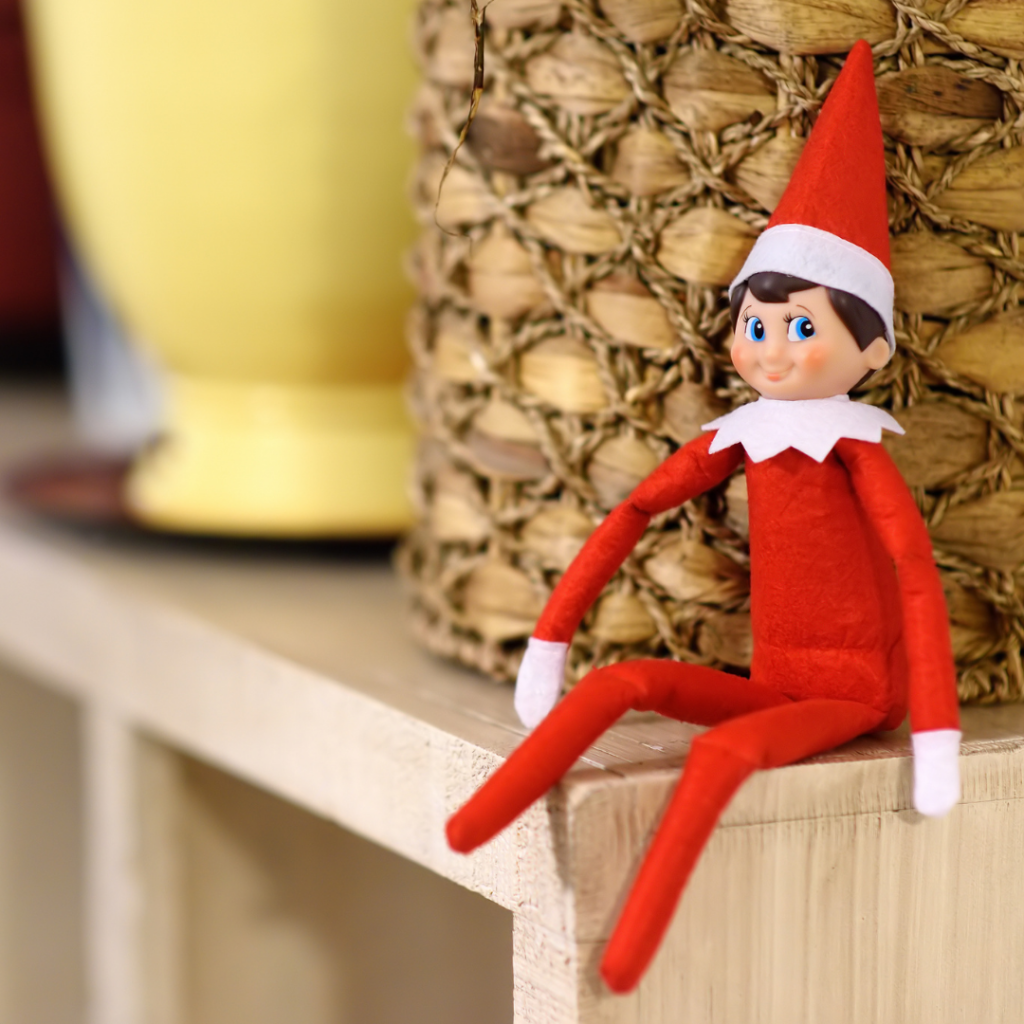[vc_row][vc_column][vc_column_text]I never was into the whole Elf on the Shelf thing with my daughter. I couldn’t tell you why, maybe I just didn’t understand it?
Does one of these little fellas occupy a place in your home during the Christmas season? I have friends who did and still do have an elf or two either sitting on a mantel, hanging from a light fixture, or perched on a Christmas tree limb.
And, as time moved on….Elf’s on the Shelves were playing just as naughty as they were nice.[/vc_column_text][vc_empty_space height=”12px”][vc_column_text]I’ve always wondered when and where these tiny folks first appeared and how they evolved into cute little creatures dressed in green or red with large, pointy ears and pointy hats? [/vc_column_text][vc_empty_space height=”12px”][/vc_column][/vc_row][vc_row content_placement=”middle” css=”.vc_custom_1534802218178{margin-top: 50px !important;}”][vc_column width=”1/2″][vc_single_image image=”10899″ img_size=”500×500″ alignment=”center” style=”vc_box_rounded” css_animation=”none”][/vc_column][vc_column width=”1/2″][vc_column_text]History has found there is a lot of conjecture as to the origin of elves, although most folklorists believe they date back to ancient history.
Ancient Norse mythology refers to the ‘alfar’, also know as “hidden folk.”
The Scandinavian and Celtic cultures had myths of fairies, elves and nature spirits. Interestingly enough, most folklore of that time depicted elves as more naughty than nice, more mischievous than merry.[/vc_column_text][/vc_column][/vc_row][vc_row content_placement=”middle” css=”.vc_custom_1534802218178{margin-top: 50px !important;}”][vc_column width=”1/2″][vc_column_text]The Scandinavians and Celts weren’t the only Europeans who believed in supernatural species. Germans had their dwarves and little sprites called kobolds. Scots had house spirits called brownies.
The word, “elf,” derives from the ancestral language of German and Old English and dates as far back as 500 A.D. [/vc_column_text][/vc_column][vc_column width=”1/2″][vc_single_image image=”10900″ img_size=”500×500″ alignment=”center” style=”vc_box_rounded” css_animation=”none”][/vc_column][/vc_row][vc_row css=”.vc_custom_1534802238716{margin-top: 50px !important;}”][vc_column][vc_column_text]The transition of elf myth to Christmas tradition is difficult to explain. Originating from pagan roots, many countries participated in seasonal celebrations, many of which took place during the winter solstice.
Centuries of elf traditions merged with the traditions of Christmas.
The association of Santa Claus with elves could well be linked from the phrasing of Clement Moore’s 1823 poem, “A Visit from St. Nicholas,” better known today as “The Night Before Christmas.” That poem refers to Santa Claus as a “right jolly old elf.” [/vc_column_text][vc_empty_space height=”12px”][vc_column_text]Harper’s Weekly
- Louisa May Alcott later wrote a book that was called “Christmas Elves” and a popular publication of the times.
- Godey’s Ladies Book published art work of Santa and his tiny elves.
- During the 19th Century, many writers were inspired by the elf link to Christmas.
- In 1857, Harper’s Weekly published a poem called “The Wonders of Santa Claus,” which tells of the elves working for Santa and making toys and sugar plums to fill children’s stockings.
[/vc_column_text][vc_empty_space height=”12px”][vc_column_text]The Saturday Evening Post
In 1922, famed artist Norman Rockwell released his painting of an exhausted Santa surrounded by busy elves finishing a dollhouse in time for Christmas. Through the decades, movies have depicted elves helping Santa prepare for Christmas, some quite unconventional, such as 1964’s classic TV special, “Rudolph the Red-Nosed Reindeer,” and 2003’s “Elf,” starring Will Ferrell.[/vc_column_text][vc_empty_space height=”12px”][vc_column_text]The trademarked “Elf on a Shelf” started in 2005 when author Carol Aebersold self-published a tale of a little elf sent by Santa to report on children’s behavior leading up to Christmas.
Although Santa Claus will always hold top billing, in the USA, Canada, and Great Britain, diminutive elves clad in green and red also add to the magic of children’s Christmas traditions.[/vc_column_text][vc_empty_space height=”12px”][vc_column_text]By now, I’m confident many of you have taken on the tradition of “Elf on the Shelf”. In fact, have probably incorporated a few traditions of you own?
Do share please! There is nothing more Holiday than sharing stories of joy and laughter.
[/vc_column_text][vc_empty_space height=”12px”][/vc_column][/vc_row][vc_row][vc_column][vc_single_image][/vc_column][/vc_row]


Another great Holiday Edition, thanks, Cindy!
Merry Christmas,
Cheri
Thank YOU! Stay tuned on Monday the 20th for #3 Holiday Edition.